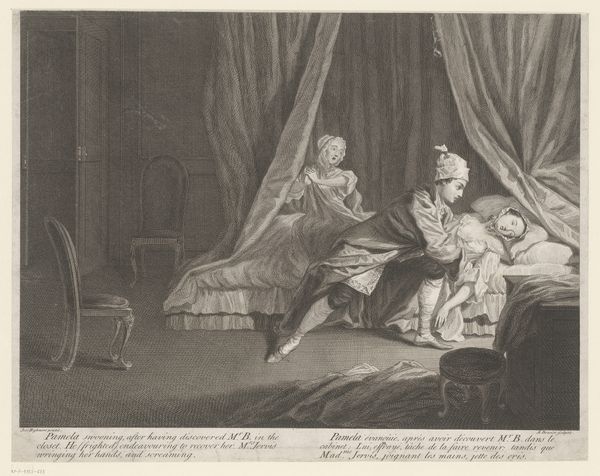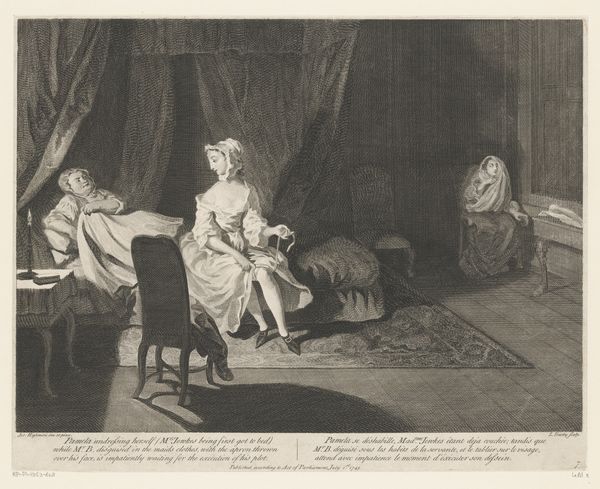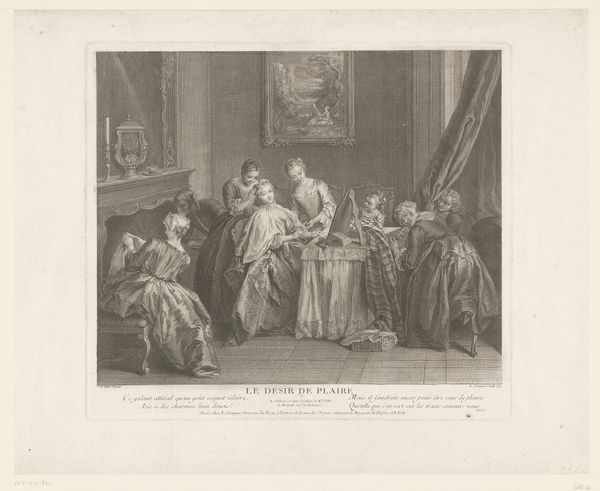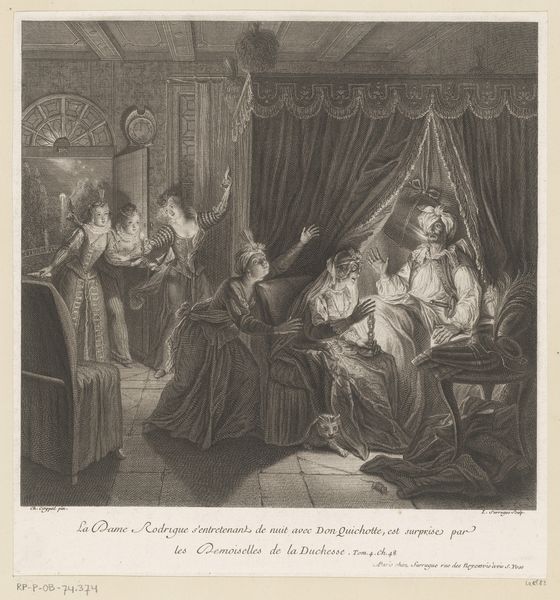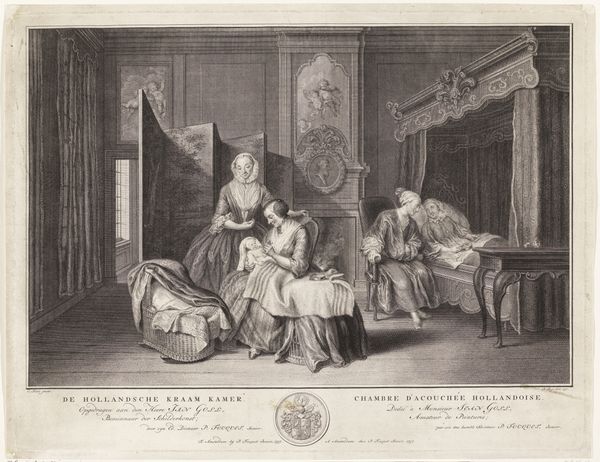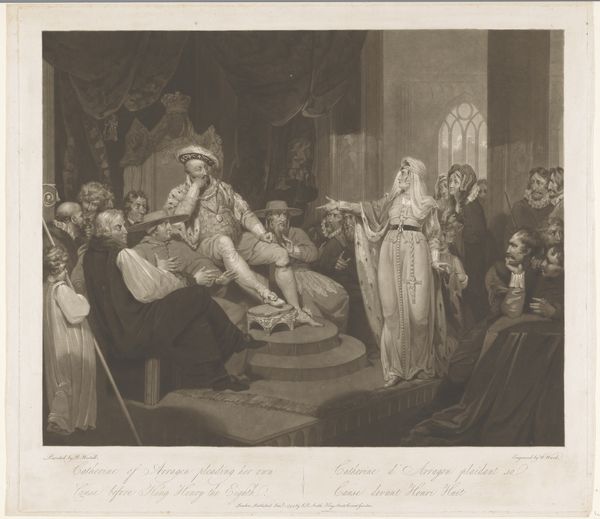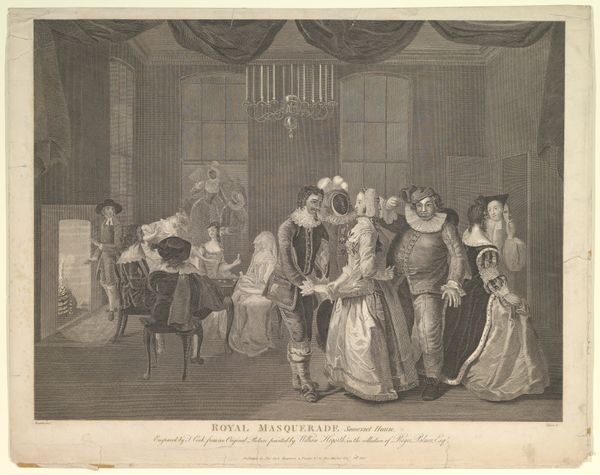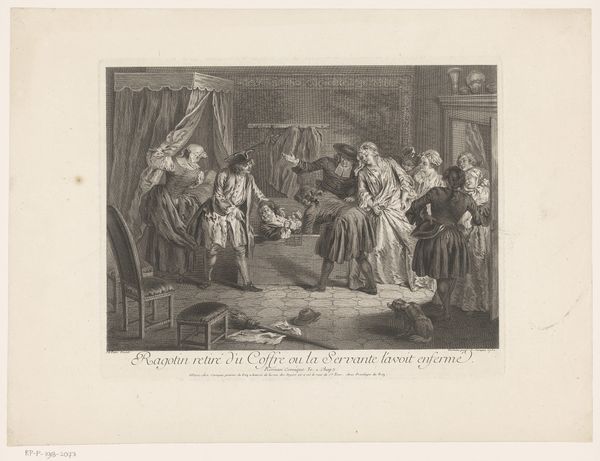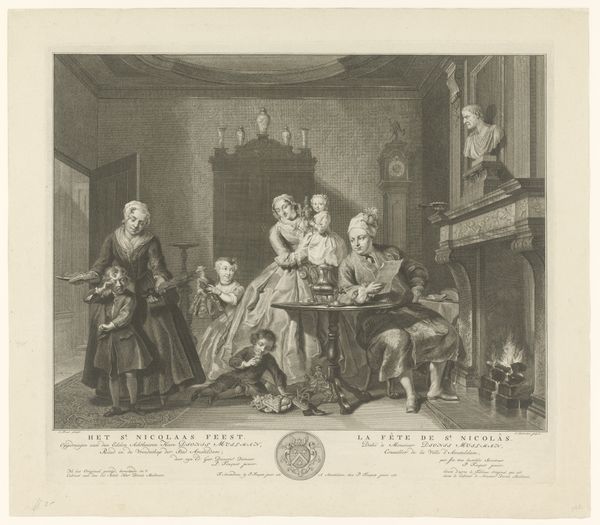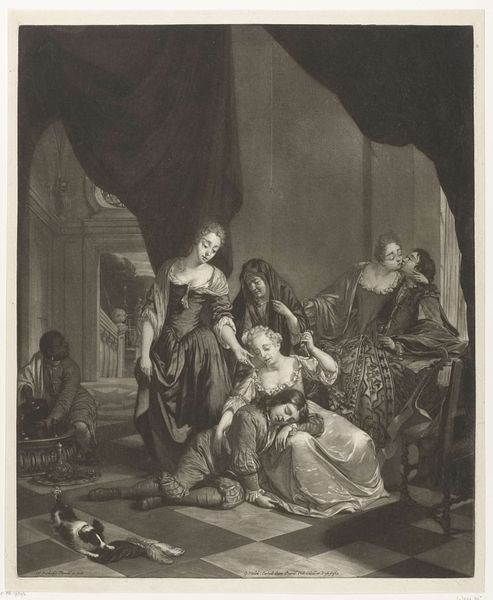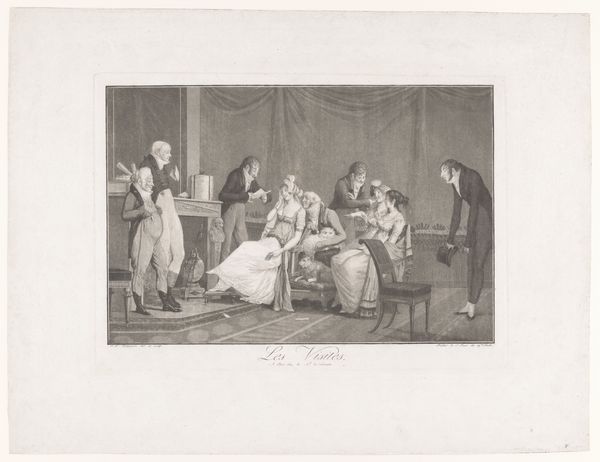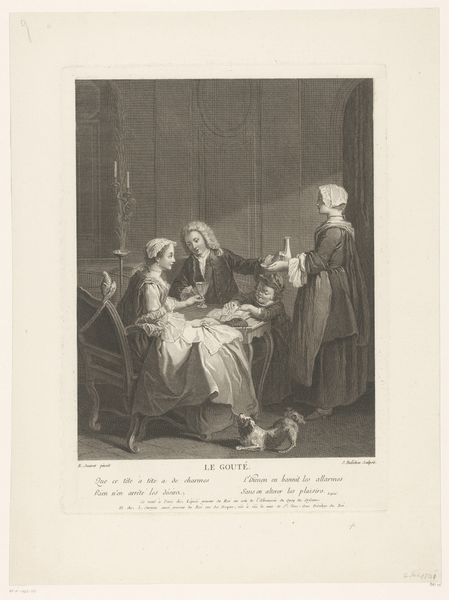
print, engraving
#
portrait
# print
#
figuration
#
15_18th-century
#
genre-painting
#
history-painting
#
engraving
#
rococo
Dimensions: height 292 mm, width 362 mm
Copyright: Rijks Museum: Open Domain
Curator: Before us we have Antoine Benoist's print, "Pamela met haar kinderen," dating possibly from 1745-1747, part of the Rijksmuseum collection. The composition depicts a domestic interior. Editor: My first impression is one of contained opulence. It’s almost stifling, isn’t it? The tightly packed figures and meticulous detailing create a very enclosed and ordered world. Curator: Indeed. The use of engraving, particularly the cross-hatching, serves to build form and convey a certain tactile quality despite being a print. Think of how those lines define the folds of Pamela’s dress and suggest the texture of the woven bassinet. Editor: Absolutely. And it makes me consider the socio-economic implications of such detail. This wasn't quickly dashed off. The labor involved in creating the plate, the paper, the printing—all reflect access to resources and skilled craftsmanship. Who were these prints made for? Curator: The "Pamela" series speaks directly to the burgeoning middle class with aspirational narratives centered on morality and domestic virtue. The distribution and consumption of such prints reinforce social norms and model ideal behaviors. Editor: But there's an interesting tension here. It is clearly an image of wealth, with luxurious fabrics and a formally arranged space. Yet, it seems like the production prioritizes disseminating a model of piety over ostentatious display. What materials went into reproducing virtue to make it widely available? How does the material reflect what they were selling in the artwork? Curator: If we turn our gaze inward, observe how the gaze of the primary figure commands a focal point directing our reading of other characters. The use of chiaroscuro lends gravity to this visual field in the print's construction. Editor: I appreciate how your eye goes to its compositional elements. My line of thinking drifts toward wondering about how different versions of Pamela's virtue have been materialized across periods and platforms—as a material phenomenon with real consequences in the labor of everyday life, rather than solely on forms, compositions and tones. Curator: Well, considering the print's delicate line work and intricate tonal gradations, there's much to unpack even on this visual, compositional level! Editor: Precisely, seeing through different lenses grants various insights on even an seemingly simple work. Thanks for that Antoine Benoist perspective!
Comments
No comments
Be the first to comment and join the conversation on the ultimate creative platform.
